Welcome to Ceramic Review
Ceramic Review is the magazine for contemporary and historical ceramics, ceramic art and pottery.
Ceramic Review Issue 328
July/August 2024
Ceramic Review is the magazine for contemporary and historical ceramics, ceramic art and pottery.
July/August 2024
Andre Hess discusses Angela Verdon’s process of creating ‘technical miracles’ in bone china – unique abstract sculptures that make you want to stop, touch and discover more
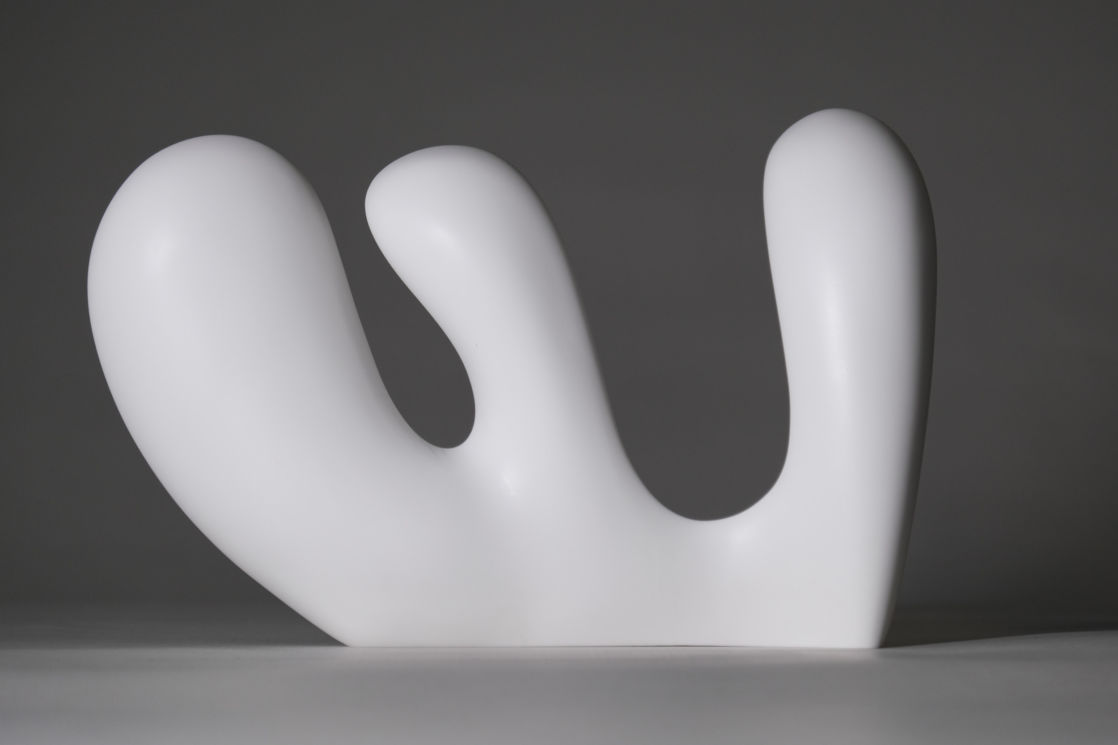
Angela Verdon
A passer-by cannot fail to notice this uncommon woman and her uncommon work. Her shapes are alien and other, edging themselves away from you, while simultaneously beckoning you nearer, wondering what they are and what they mean. Some observers are pulled towards them, and so close, to be almost into the substance they are made of. Hers is not the all-it-wants-to-do-is-please kind of work, but are points of stillness and interest, little punctures in space and time that speak directly to some. Those observers are stopped in their tracks, aware that their breathing has changed suddenly and that they are in the presence of something that is continually renewing itself.
Angela Verdon was one of the first studio potters of her genertion to work with bone china, originally making pierced translucent vessels, then moving on to enclosed sculptural shapes. No appreciation of her work can proceed without mention of its historical and technical peculiarity, which is itself an outlier in the world of studio pottery. This technical endeavour (inseparable from its industrial vocabulary), together with the subjectivity and personality of the woman herself, is the work’s context.
ARTISTIC INTENTION
Think 1748. Think Thomas Frye. Think cattle markets and slaughterhouses in East London (cattle bones are naturally lower in iron, a pollutant to this material). Think Cornish stone and bone ash. Now track these materials and methods as they spread and change and spread again to other English factories, and on to the West Midlands, where they eventually find Verdon bent over her table at the Gladstone Pottery, her face only inches away. Was this her epiphany?
The history and frightening difficulties of working in bone china are inseparable from her artistic intention and the uniqueness of her work. Each is a technical miracle, the crystallisation of a slow and labour-intensive process. Her formative years making ceramics started aged 15, when she found herself in an after-school pottery class, working with plaster alongside clay. She then went on to Wolverhampton Polytechnic, as it was known then, where she met John Higgins, Jacqui Poncelet, Dennis Farrell, Tony Bennett and Peter Edwards. This was followed by a Masters degree at the Royal College of Art. Currently she works in her studio in Derby, and periodically in studio space at Valentine Clays in Stoke-on-Trent.
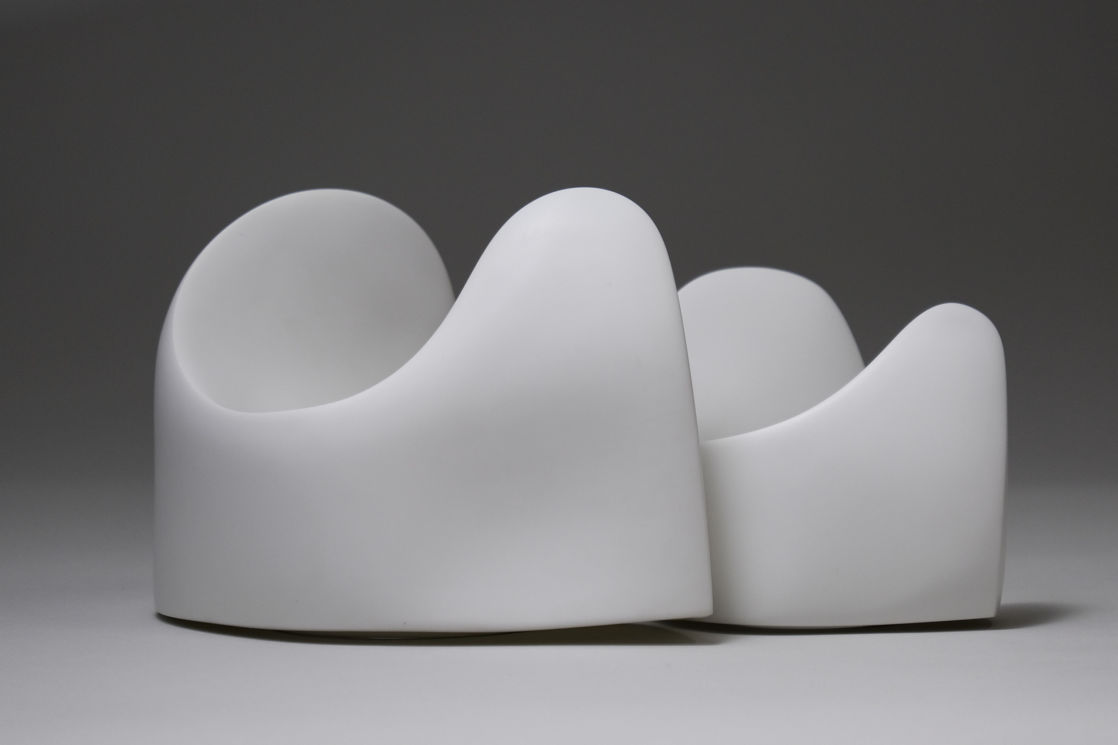
Angela Verdon
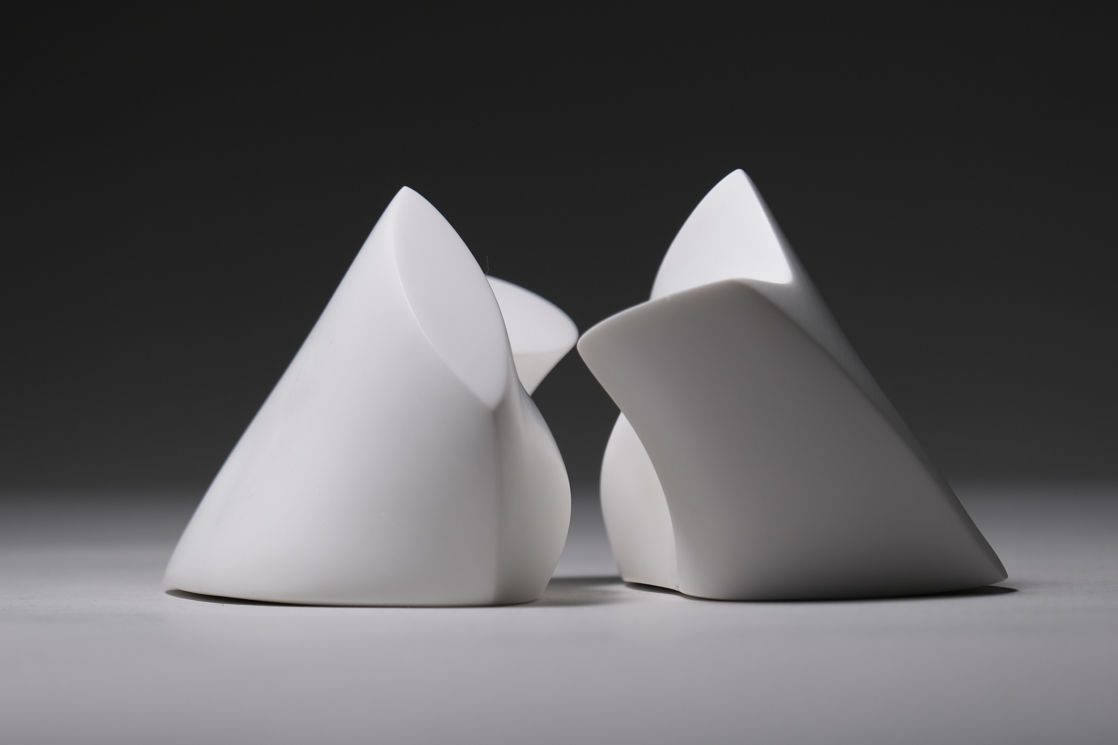
Angela Verdon
Verdon makes a basic ‘positive’ shape out of plaster (currently these are simple enclosed abstracted sculptural shapes). This object is carved and worked. Her toolbox includes riflers, hacksaws, graters, surform blades (these are the same tools she uses during her mould-making). The next stage is casting the resulting shape, importantly, still only a step in the making.
Now imagine this damp object, fresh out of the mould, still open to bending and folding, sometimes folded to the point of collapse. As a new shape emerges and hardens the serious scraping and sanding process begins. This reduces its thickness to just this side of ‘going through’ – that nightmarish moment. It is constantly checked for the merest impurities, which are pinged out with fine needles. Verdon might mumble to herself, ‘they need more magnets, they need better magnets’, as she works, referring to the use of the powerful magnets to remove iron particles from the material as it is being made in the factory.
She taps the damp form constantly as it is scraped and sanded, as if listening to the makers of old doing the same, mindful of a very particular edge she is after and wishes to keep. Sometimes she knows the piece will not survive the firing, but still she continues, perhaps obsessively, and with melancholy. ‘It is a controlled collapse,’ she says, ‘as much about hope as anything else…a penance.’
This is followed by a bisque-firing, and further hours of sanding and smoothing, bent over the work, her anatomy having remodelled itself over the years for the sake of the work. ‘These pieces are often sanded so thin that they do not have the right to exist,’ she says. ‘Bone china,’ she repeats and sighs, gathering her thoughts, ‘is the anathema to studio ceramics, with all its expressiveness and freedom and colour.’ Verdon is fully aware of the counterarguments to her choice of material, some even expressing sympathy.
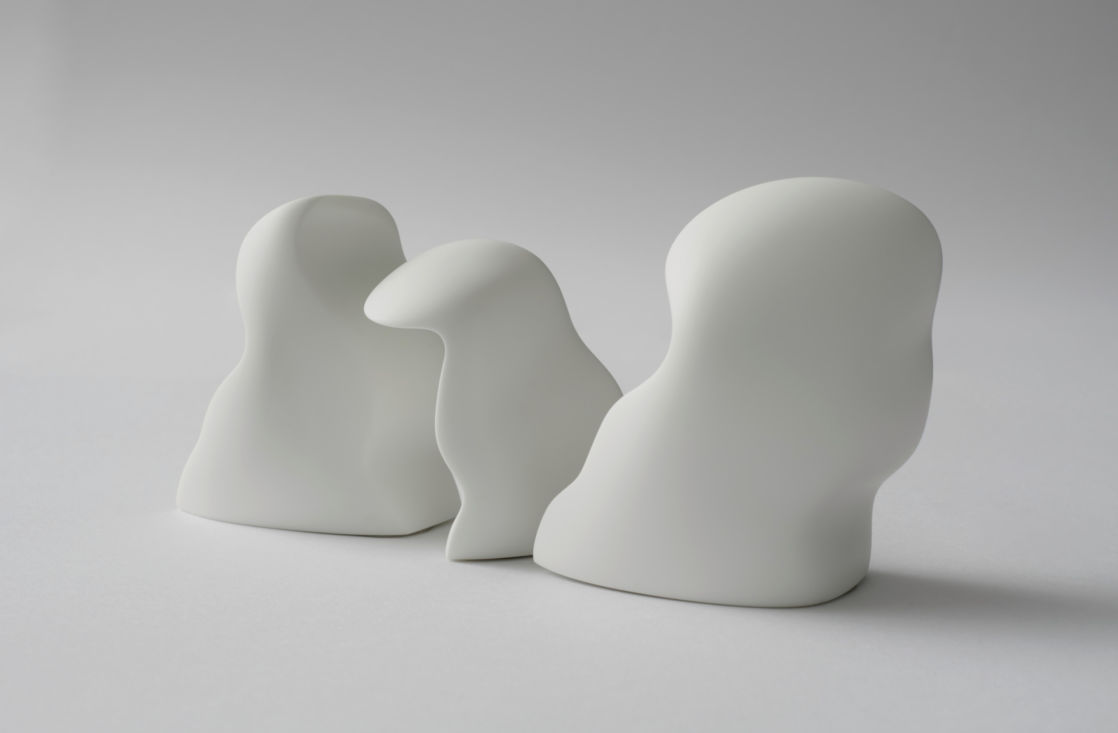
Angela Verdon
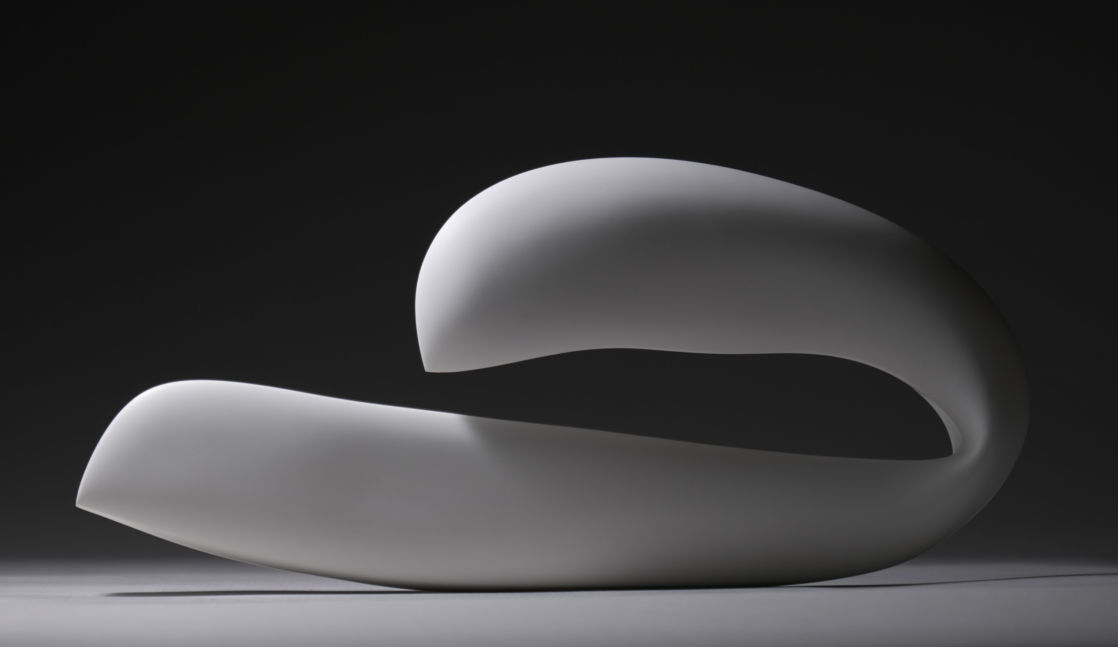
Angela Verdon
SHAPES AND SURFACES
The apparent lightness of touch communicated by Verdon’s work belies the weight of hard work that brought them to life. Bone china does not want to be thin; it does not want to survive. The physical effort and the high loss rate, sometimes as much as 60%, is hard to bear. Then comes the final firing. ‘The kiln sometimes laughs at me,’ she says of pieces that sag and collapse, the kiln taking them ‘to the edge’ of their narrow firing range. ‘But sometimes the kiln smiles at me.’ And when the kiln indeed smiles at her, the finished works possess a clarity of shape and surface that is miraculous.
Verdon’s work demands serious noticing and deep concentration, knowing that the thing is affecting you, yet satisfied not to understand why (the way of all true abstract art). They oscillate between presence and absence, in a rhythm. It is possible to say, too, that these shapes and surfaces can make you feel melancholic, despite their whiteness and lightness – a valid response. To the touch they are almost impossibly smooth, but there is an aliveness in the surface, a glow that does not depend on the usual means associated with ceramics. They call out to be touched, when we know that touching might pluck them from the world of the imagination. They return to their world as we withdraw from them, oblivious of how much time might have passed while we were looking.
Unashamedly based in the material, it can be argued that it is the struggle itself that makes up a large part of the subject matter of Verdon’s work. The pieces are highly wrought and considered. But how does she know when a piece is successful? ‘You just know,’ she states. ‘An unsuccessful piece plays on your mind and always ends up in the recycling bin. A successful piece works at the level of your body, makes you feel things like longing and finding, and demands more looking. Just looking.’
Her pieces allude only tangentially to shapes in the real world, and very often, not even that. They consist of shapes juxtaposed. Of almost diamond-hard objects that appear to have been bent and folded like cooling toffee. They consist of curving planes, of clean edges. Resemblance or depiction is never sought or intended.
Hers is possibly the truest of abstract art made in ceramic. What of her inspirations? She talks of shapes and angles and junctions she plucks out of the empty space in front of her, with Eduardo Chillida, Hans Arp, Rachel Whiteread, Phyllida Barlow, Tony Cragg, Ken Price, Ron Nagle, and many others whispering in her ear.
Accidents delivered by the kiln, like gently collapsing a white-hot piece, are sometimes sought, and physical tensions are desired – moving the piece further away from any reference in the real world. The effects of both creation and destruction are at work and there for all to see. There is no glazing, decorating or finishing. What you see is what the piece is made of.
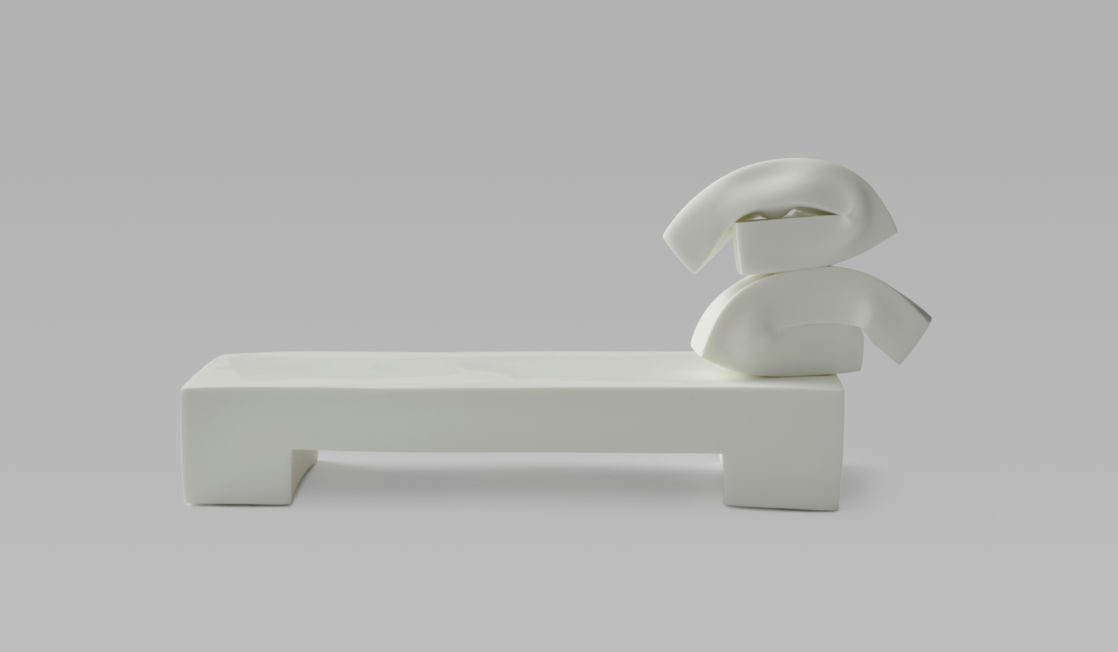
Angela Verdon
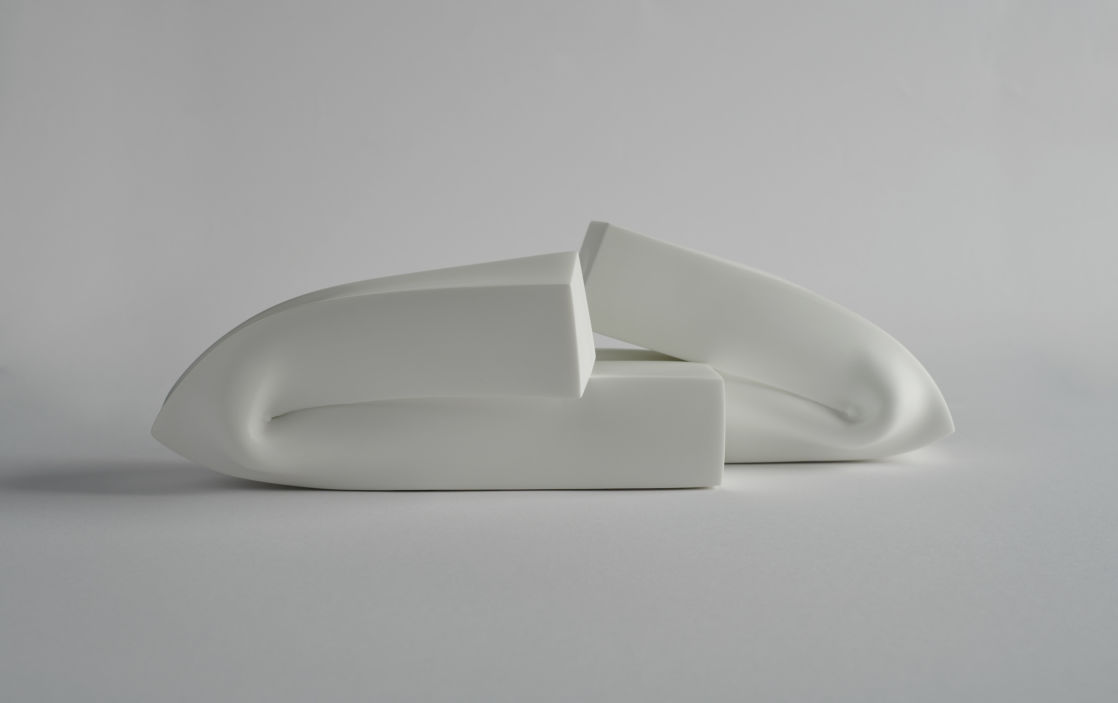
Angela Verdon
APPEAL OF ABSTRACTION
How does one explain the appeal of Verdon’s work? The appeal of abstraction? There have been many attempts
at explaining why such deep human aesthetic pleasure can be had from something so devoid of recognisable content (figurative or narrative), I will not, therefore, in this piece of writing, succeed in explaining why abstraction moves people, except to alert sceptics to the fact that it does. Like Verdon’s work does.
But where does she think her work is placed in the world of studio pottery and ceramic sculpture? ‘Even my earliest work was definitely a reaction to the terms understood of studio ceramics at the time, perhaps even now,’ she explains. ‘I have always loved industrial techniques. My work has evolved from that, to honing my skills, and mastering the medium, so that I can capture that elusive and momentary fluidity that bone china possesses.’
Verdon has spent her career poking the behemoth that is bone china. Her sculptures are hard-won little injections of intense life and complexity into a medium that is difficult and unusual for ceramicists.
For more details visit angela-verdon.com
Images: courtesy of the artist; photos by Damian Bullimore, Nick Dunmur, Brian Slater